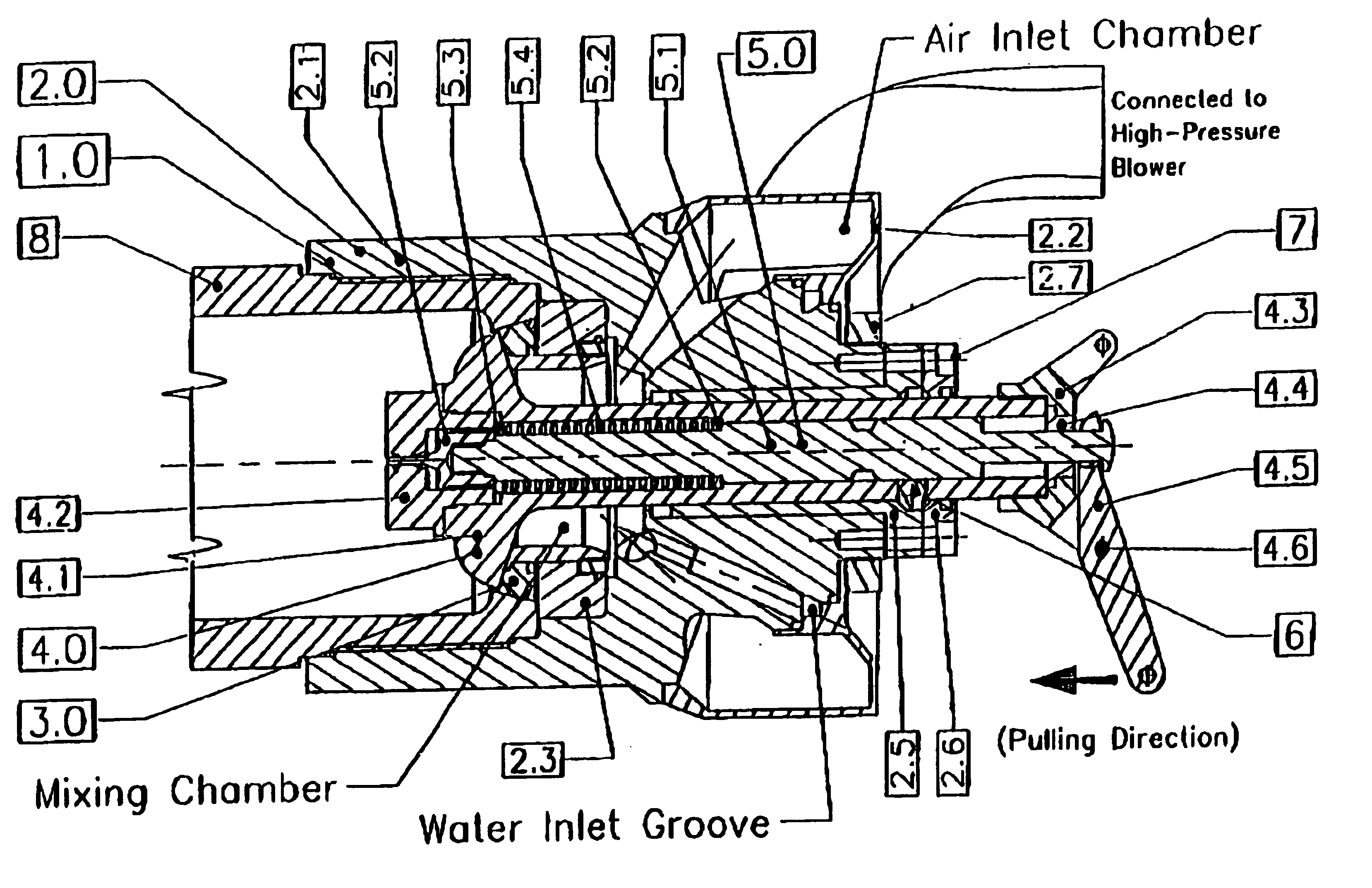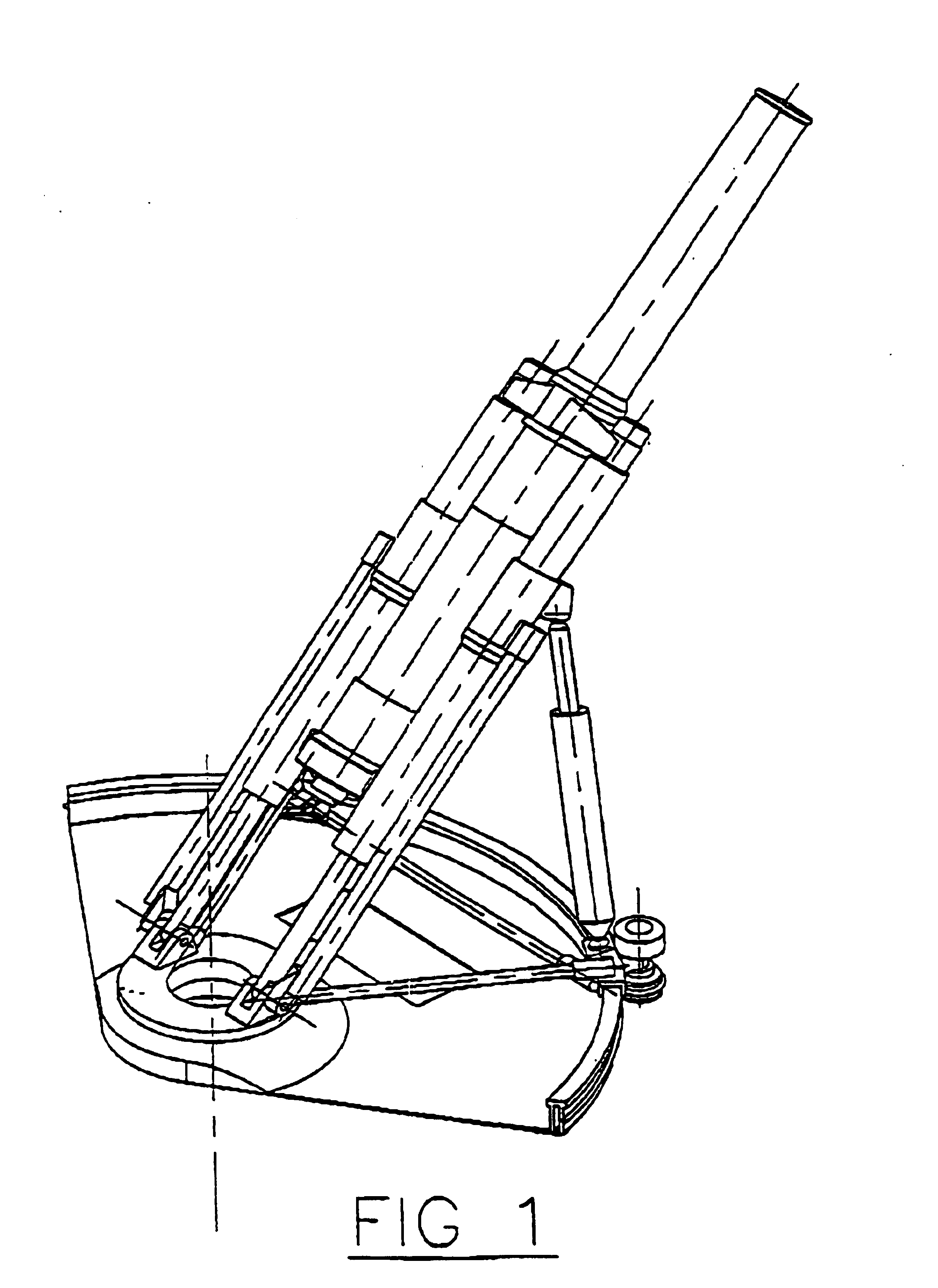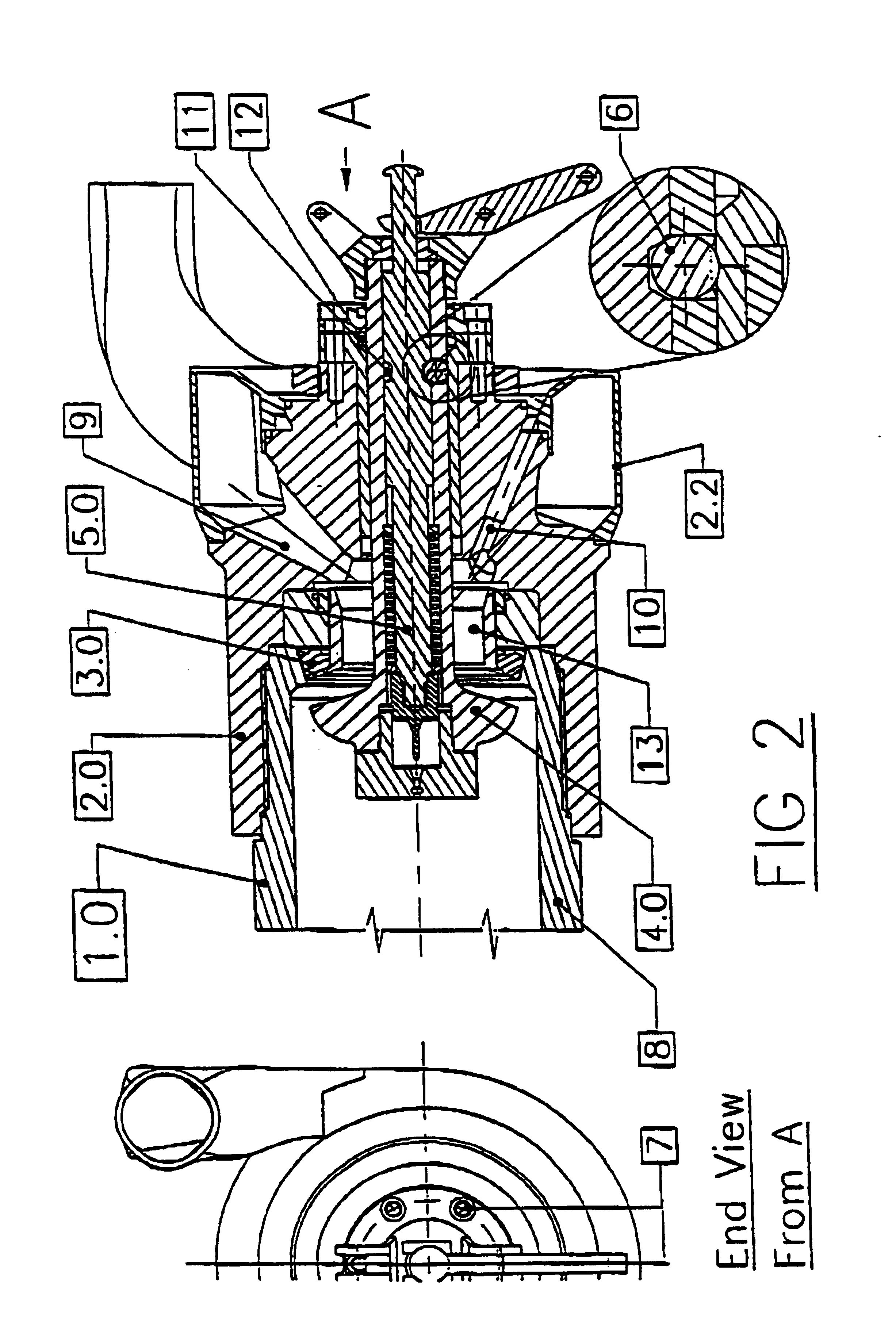Artillery firing mechanism
a firing mechanism and firing mechanism technology, applied in the direction of firing/trigger mechanism, breech mechanism, weapon, etc., can solve the problems of limiting the user's use, unable to achieve a high firing rate, and air trapped, so as to reduce the loading cycle time and increase the firing rate
- Summary
- Abstract
- Description
- Claims
- Application Information
AI Technical Summary
Benefits of technology
Problems solved by technology
Method used
Image
Examples
example a
Heat Generated per Round FiredTemperature increase per round fired assumed to be 3° C.Weight of the Barrel assumed to be 80 kgTherefore,80 kg×3° C.×0.11=26,400 Calories
Amount of water required for c mpletely removing the heat generatedHeat of Vaporization of water at 1 atm:540 Calories / gramTherefore,26,400 Calories±540 Calories / gram≅49 gram (theoretical)
Convection Heat Transfer Coefficient5,000˜50,000 W / m2°C. (depending on the temperature difference)1 kW=239 Calories / second; Round-off to 240 Calories / secondTherefore1,200˜12,000 Calories / second
Water Flow EstimatedThe surface area of the Barrel Bore: φ0.12 m×π×2 m L=0.75 m2 If the heat Transfer Co-efficient of 12,000 Calories / second is achievable, then the optimal water flow rate should be: 12000 Cal×0.75540 Cal=16.67 gm / sec
Cooling Cycle Time and its EfficiencyTime taken to load the mortar bomb and for it to travel inside the barrel 0.8 secTime taken to fire, recoil until the cooling valve opens 0.1 secTime taken to dry the barr...
PUM
 Login to View More
Login to View More Abstract
Description
Claims
Application Information
 Login to View More
Login to View More - R&D
- Intellectual Property
- Life Sciences
- Materials
- Tech Scout
- Unparalleled Data Quality
- Higher Quality Content
- 60% Fewer Hallucinations
Browse by: Latest US Patents, China's latest patents, Technical Efficacy Thesaurus, Application Domain, Technology Topic, Popular Technical Reports.
© 2025 PatSnap. All rights reserved.Legal|Privacy policy|Modern Slavery Act Transparency Statement|Sitemap|About US| Contact US: help@patsnap.com



